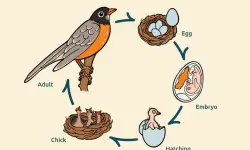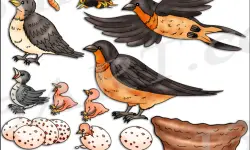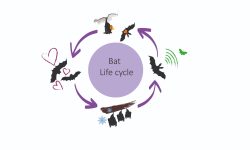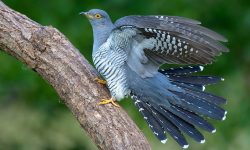Pheasants are among the most visually striking birds on Earth, admired for their vivid colors, extravagant plumage, and captivating courtship displays. Found in various habitats across Asia and beyond, these birds are not only a symbol of beauty but also a marvel of evolutionary adaptation. In this article, we explore the 7 most stunning pheasant species in the world.
1. Golden Pheasant (Chrysolophus pictus)
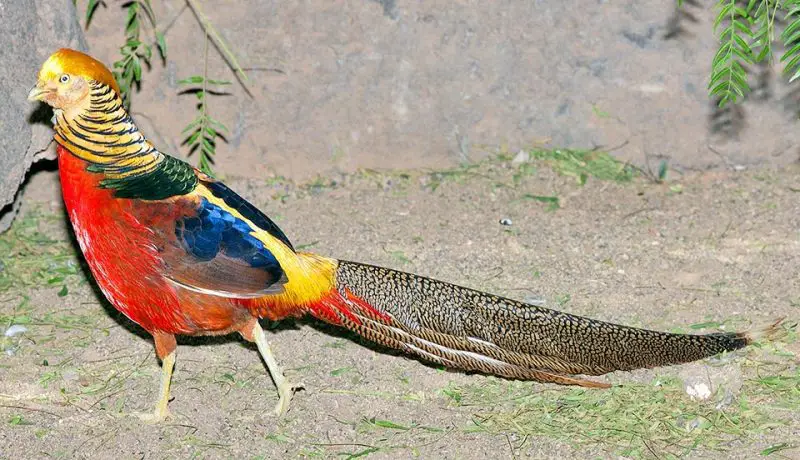
A Radiant Jewel of the Chinese Forests: Scientific Insights
Hailing from the dense woodlands of western China, the Golden Pheasant is celebrated for its breathtakingly vibrant plumage that dazzles with shimmering hues of gold, fiery red, emerald green, and iridescent blue. The male stands out with a magnificent golden-yellow crest that crowns its head like a regal crown, paired with a striking, cape-like orange ruff that flares dramatically during elaborate courtship rituals. Its exquisitely long tail feathers—making up nearly two-thirds of its total body length—flow gracefully behind it, enhancing its majestic and elegant silhouette.
From a scientific perspective, the Golden Pheasant’s vivid coloration results from a combination of pigment-based colors (carotenoids and melanins) and structural coloration—microscopic feather structures that refract light to produce iridescent effects. This complex coloration plays a crucial role in sexual selection, signaling the male’s health and genetic fitness to potential mates. Moreover, the extended tail feathers serve both as a visual display to attract females and as a demonstration of the male’s ability to survive despite the increased predation risk posed by such conspicuous traits.
The species’ preference for dense forest habitats provides insight into its behavior and ecology; the Golden Pheasant uses its vibrant colors for short-range communication within the dim, shadowy forest understory. This fascinating interplay between evolutionary biology and ecological adaptation makes Chrysolophus pictus an extraordinary subject of ornithological study.
2. Lady Amherst’s Pheasant (Chrysolophus amherstiae)
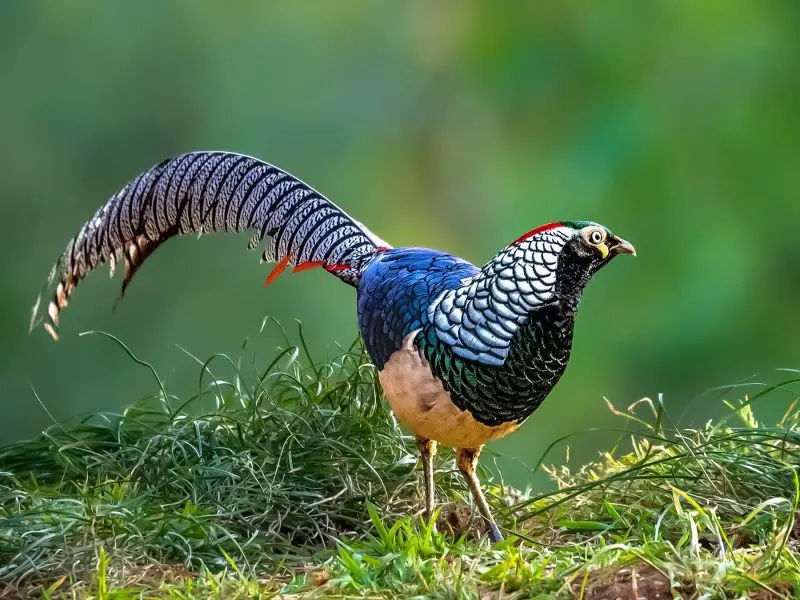
A Monochrome Masterpiece with Subtle Elegance: Scientific Perspective
Closely related to the Golden Pheasant, Lady Amherst’s Pheasant captivates with a more understated yet equally mesmerizing appearance. The male boasts a striking silvery-white cape adorned with intricate black markings that create a dramatic contrast against its deep greenish-black body. Its remarkably long, elegantly striped tail feathers extend far beyond its body, serving as a visual signal during mating rituals. This species is native to the dense forests of southwestern China and parts of Myanmar, where its shy and elusive behavior makes it a rare sight in the wild.
From a scientific standpoint, the distinct monochrome patterning of Lady Amherst’s Pheasant is an excellent example of disruptive coloration, which may aid in camouflage within dappled light environments. The black and white markings help break up the bird’s outline among shadows and foliage, reducing detection by predators while still allowing males to display prominently during courtship. Additionally, the elongated tail feathers play a significant role in sexual selection, signaling genetic quality to females through their size, symmetry, and condition.
Ecologically, Lady Amherst’s Pheasant favors dense undergrowth and bamboo thickets, an adaptation that influences its cryptic coloration and secretive lifestyle. Studying this species helps ornithologists understand how visual signals evolve in environments where both camouflage and display are essential survival traits.
3. Himalayan Monal (Lophophorus impejanus)
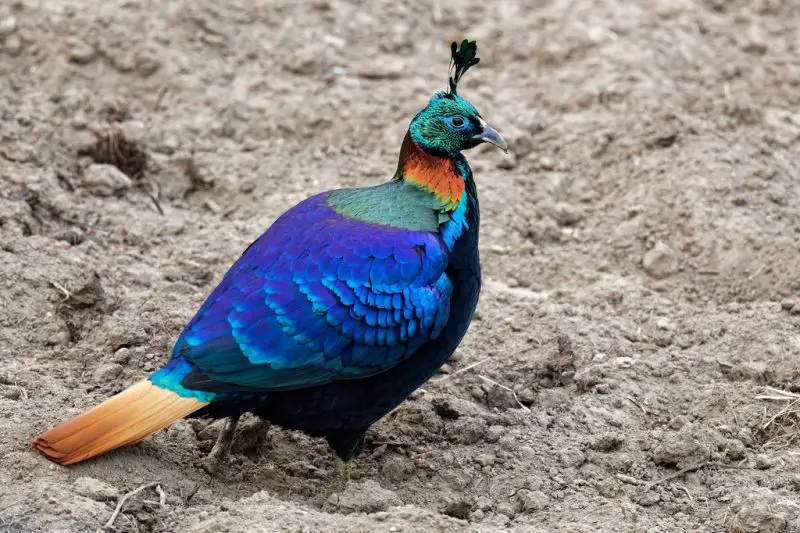
The National Bird of Nepal: A Masterpiece of Iridescence and Adaptation
The Himalayan Monal, also known as the Impeyan Monal, is renowned for its spectacular iridescent plumage that shimmers with metallic hues of electric blue, emerald green, fiery orange, and violet. These vibrant colors become especially radiant under direct sunlight, making the male one of the most visually striking birds of the alpine region. Native to the high-altitude forests and alpine meadows of the Himalayas, this pheasant embodies both aesthetic beauty and remarkable ecological resilience.
From a scientific perspective, the Himalayan Monal’s dazzling coloration is primarily a result of structural coloration, where microscopic nanostructures in the feathers manipulate light through interference and diffraction to produce its brilliant, changing colors. This form of coloration is highly energy-efficient and resistant to fading, which is advantageous in its harsh mountain environment.
Ecologically, the species has adapted to survive in extreme cold climates at elevations ranging from 2,100 to over 4,500 meters (6,900 to 14,800 feet). Its dense plumage provides insulation against freezing temperatures, while its robust body and strong legs are suited for navigating rugged, rocky terrain. The Himalayan Monal’s vibrant colors also play a crucial role during the breeding season, acting as visual signals to attract females and assert dominance among males in open, sparse habitats where other forms of communication might be limited.
This combination of physiological adaptation and evolutionary artistry makes Lophophorus impejanus a fascinating subject for studies in avian biology, ecology, and evolutionary science.
4. Palawan Peacock-Pheasant (Polyplectron napoleonis)
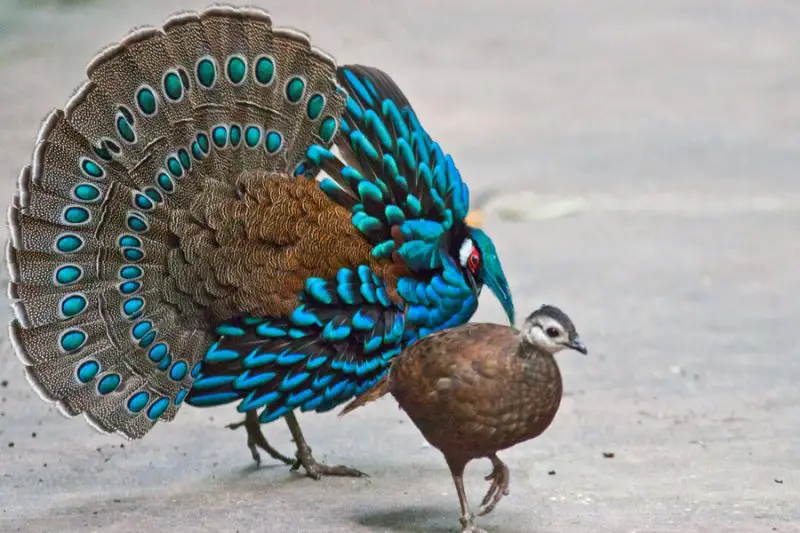
A Tropical Gem from the Philippines: Evolutionary Marvel of Display and Camouflage
Endemic to the lush rainforests of Palawan Island in the Philippines, the Palawan Peacock-Pheasant is a stunning example of tropical avian beauty and evolutionary specialization. The male’s glossy purplish-black plumage is adorned with iridescent metallic green eyespots on its tail feathers, creating a mesmerizing pattern reminiscent of a miniature peacock. During elaborate courtship displays, the male fans its tail wide, showcasing these spectacular eyespots to attract females and assert dominance over rivals.
Scientifically, the remarkable eyespot patterns result from complex nanostructures within the feathers that manipulate light to produce iridescence and vivid coloration. These visual signals are crucial in sexual selection, where females preferentially choose males with the most vibrant and symmetrical displays, which often indicate superior genetics and health.
Despite its beauty, the Palawan Peacock-Pheasant is classified as near-threatened, primarily due to habitat loss from deforestation and human encroachment. Its restricted range makes it particularly vulnerable to environmental changes, highlighting the importance of conservation efforts.
Ecologically, this species thrives in dense, lowland tropical forests where its dark plumage provides camouflage against predators in the dim understory. Studying Polyplectron napoleonis offers valuable insights into the balance between conspicuous display and predator avoidance in evolutionary biology.
5. Reeves’s Pheasant (Syrmaticus reevesii)
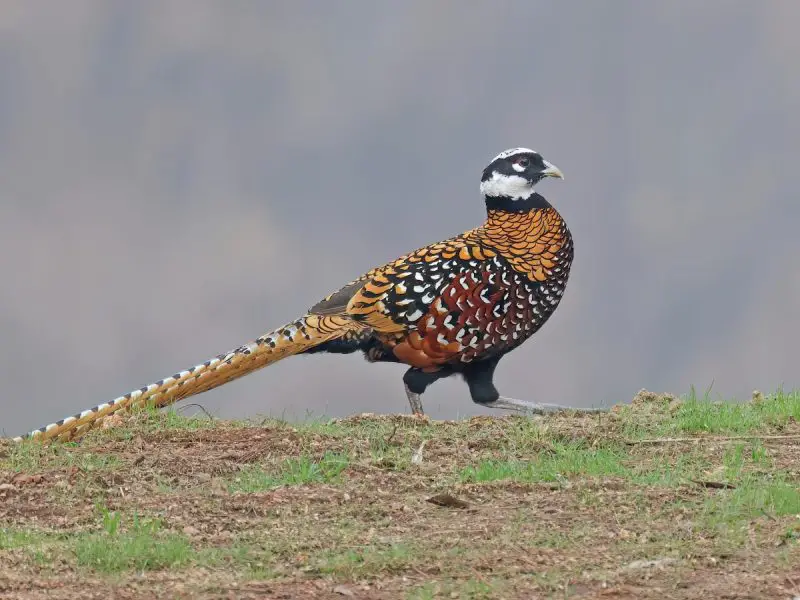
The Longest-Tailed Marvel of China: Evolutionary Adaptations in Display
Native to the temperate forests of central and eastern China, Reeves’s Pheasant is renowned for possessing one of the longest tails relative to body size among birds—males can sport tail feathers extending up to an astonishing 2.4 meters (nearly 8 feet). This extraordinary tail is not only a striking visual feature but also a key component in mating displays and social hierarchy.
The male’s plumage combines bold contrasts of black, white, and rich golden hues, with a distinctive white head and throat that enhances its dramatic appearance. From an evolutionary biology perspective, the extreme tail length exemplifies sexual selection pressures, where females favor males with the most extravagant tails as indicators of genetic fitness and vitality.
However, maintaining such an elongated tail comes with significant costs, including increased energy expenditure and vulnerability to predators. The survival of males with such extreme traits suggests a delicate balance between natural and sexual selection. These tails also serve as signals during male-to-male competition, with larger and healthier males typically dominating access to mates.
Reeves’s Pheasant’s adaptation to dense forest environments allows it to use both visual and behavioral cues effectively within its habitat, making it a fascinating subject for studies on evolutionary trade-offs, ornamentation, and mating systems in birds.
6. Siamese Fireback (Lophura diardi)
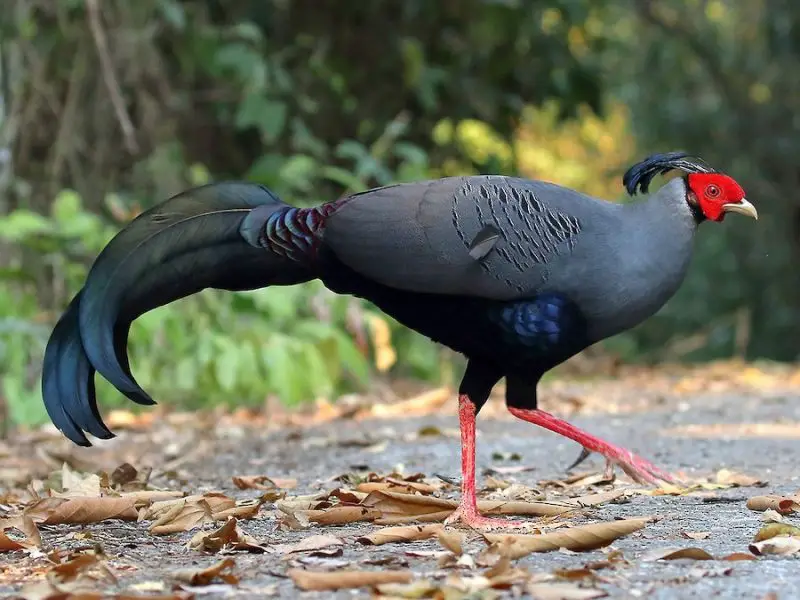
A Rare and Regal Bird of Southeast Asia: Ecological and Evolutionary Insights
Inhabiting the dense lowland forests of Southeast Asia, the Siamese Fireback stands out as a regal and visually captivating pheasant species. The male features a sleek metallic bluish-grey plumage contrasted by vivid bright red facial skin, while its long, jet-black tail feathers add to its dignified profile. Revered for its distinctive coloration and graceful posture, the Siamese Fireback holds the honor of being the national bird of Thailand.
From a scientific viewpoint, the bird’s metallic plumage results from microstructures within the feathers that reflect light, producing its characteristic iridescent sheen. The bright red facial skin is a form of bare-part coloration that can indicate hormonal status and health, playing a vital role in intraspecific communication during mating and territorial disputes.
Ecologically, Lophura diardi thrives in tropical lowland forests where dense vegetation provides both cover from predators and abundant resources. Its preference for this habitat underscores its role in the forest ecosystem, particularly in seed dispersal and insect population control. The species’ elusive nature and sensitivity to habitat disturbance make it an important indicator of forest health.
The combination of unique physical traits and specialized habitat requirements highlights the Siamese Fireback as a key species for conservation and an excellent model for studying the interplay between sexual selection, signaling, and environmental adaptation.
7. Edwards’s Pheasant (Lophura edwardsi)
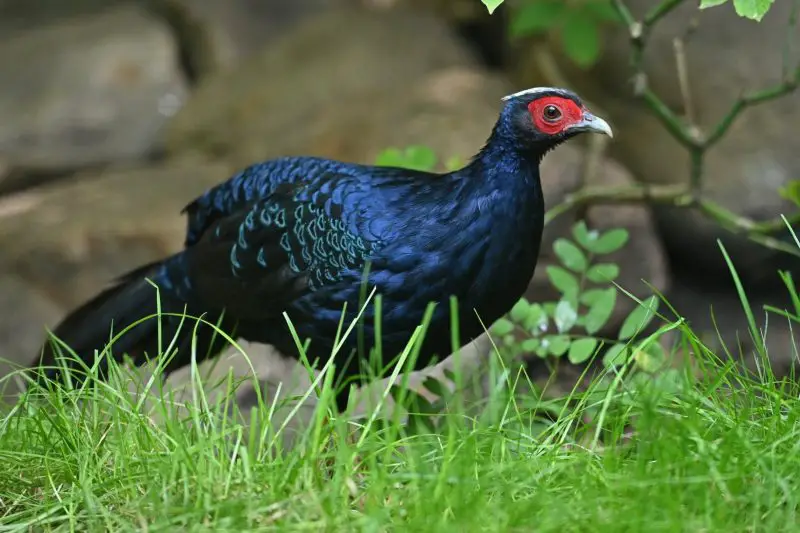
A Mysterious Blue Beauty of Vietnam: Conservation and Ecological Significance
Edwards’s Pheasant is a critically endangered species endemic to the dense rainforests of central Vietnam. The male is distinguished by its striking deep indigo-blue plumage contrasted with a bright white crest and a relatively short tail, creating a unique and captivating appearance. Its elusive behavior and restricted habitat range have contributed to its rarity, making it one of the least observed pheasants globally and adding an air of mystery to this enigmatic bird.
From a scientific perspective, the intense blue coloration arises from specialized feather microstructures that scatter light, producing a vibrant and stable iridescent effect. The white crest acts as a visual signal during courtship and territorial interactions, while the shorter tail reflects an adaptation to maneuvering through dense forest undergrowth rather than long-distance displays.
The species’ critical conservation status highlights the fragility of its habitat, threatened by deforestation and human encroachment. Preservation efforts are vital not only for Lophura edwardsi but also for maintaining biodiversity and ecological balance within its rainforest ecosystem.
Studying Edwards’s Pheasant offers valuable insights into the effects of habitat fragmentation, the evolution of coloration in dense forest environments, and strategies for conserving rare and secretive species in rapidly changing landscapes.
Conclusion
From the vibrant Golden Pheasant to the elusive Edwards’s Pheasant, each of these stunning birds showcases the incredible diversity and splendor of the pheasant family. Whether you are a birdwatcher, conservationist, or simply someone who appreciates natural beauty, these seven pheasants are unforgettable symbols of avian elegance and evolution.

